Water Management Systems
Water ManagementSystems
In this chapter, you will learn about
- Water management system design
- Water management devices and usage
- Control of a water management system
- Water management system programming
- The different heating and cooling technologies of water management systems
A modern home has many water systems that people take for granted, including water heating and yard sprinkler systems. Few people actually consider that there are several operational and cost-saving benefits that can be gained by installing a water management system to manage and control these systems.
Water management control systems use the same existing and emerging technologies as many other parts of a home automation system, such as those used to control lighting, heating, and air conditioning, and other energy and utility-based systems in a home.
In this chapter, we take a look at the ways in which various parts of a home’s water system can be managed and controlled to conserve water and to provide both energy and cost savings to the homeowners.
Residential Water Management Systems
The primary water systems that can be considered when designing a residential water management system are water heating, sprinkler systems, watering systems, and pools, spas, and hot tubs. Many of the everyday uses of water in a home, such as drinking water, cold-water laundry, and perhaps washing the car, don’t require water to be heated. Heating water can be a major expense and area of energy consumption to many homeowners—and this doesn’t even include systems like a hydronic (hot water) radiant heating system (see Chapter 29). In addition to heating water, another major use of water in many households, and its associated expense, is the use of a yard sprinkler system or watering plants.
It stands to reason, therefore, that by using a water management system to control the functions of heating water and its use in large-volume use applications there should be energy and cost savings to be gained.
Water management systems are comprised of a variety of subsystems. The subsystems most commonly included in a home system environment are
- Water heaters
- Interior irrigation systems
- Exterior sprinkler systems
Water Management System Devices
The list of devices that are common to a water management system in a home isn’t actually very long. In fact, for most homes, the list is limited to a water heater and perhaps the outside sprinkler system. However, many newer homes are including a variety of other water-related devices that can be designed into the water management system.
Water Heating Systems
After the Heating, Ventilating, Air Conditioning (HVAC) system, the water heater is the next largest energy consumer in a home. Controlling a water heater can reduce the amount of time water is actually being heated without the homeowners ever having to do without hot water. In fact, some systems even allow the homeowners to use a telephone to call ahead and start up the water heater. Table 30-1 compares the features of an automated water management system with a home without one.
In addition to the features listed in Table 30-1, some water management systems can also provide such features as remote control of water heaters, showers, and tubs using either remote control or voice control, scald protection, and control of the system through a PC, telephone, or handheld or tabletop remote control.
|
Home with Water Heater Controls |
Home Without Water Heater |
|---|---|
|
Automated shower controls with preset water temperatures |
Mix hot and cold water manually |
|
Virtually unlimited hot water |
Runs out of hot water |
|
Heats water only on demand or on schedule |
Water heated everyday around the clock, whether it is needed or not |
|
Water heaters are on only when house is occupied |
Water heaters always on |
Water Heater TypesThere are actually several types of water heaters that can be used in a home. The most common types are storage water heaters, which are the most prevalent and are often referred to as conventional water heaters. Storage water heaters use a variety of fuel types or energy sources, such as natural gas, propane, electricity, and oil, to heat water held in its tank that typically has a capacity of 20 to 80 gallons (75 to 303 liters). Heated water is drawn from the top of the tank whenever a hot water tap is opened and cold water flows into the bottom of the tank to keep the tank full. Storage water tanks are continuously heating the water in the tank to the temperature set on its heating control. One of the drawbacks to a storage water heater is its standby heat loss that results in energy use to keep the water at a constant temperature.
Other types of water heaters that are less often used in homes are
- Demand water heaters
- Heat pump water heaters
- Tankless water heaters
- Indirect water heaters
- Solar water heaters
Sprinkler and Irrigation Systems
Sprinkler and irrigation systems can be used both inside and outside a home. Although sprinkler systems are more commonly associated with exterior landscape irrigation, they can also be used as part of a fire alarm system, although this application is rarely found in residences.
Irrigation systems inside the home can be used to maintain a regular watering schedule or plan for home’s interior plants.
Interior Irrigation SystemsInterior plants can be an important part of a home’s interior design, not only for their aesthetics, but also for their contribution to the home’s air quality. However, the downside of interior plants, especially if there are a fair number of them, is that watering can be the most time-consuming part of houseplant care. Because of this, and the desire of homeowners to decorate with live plants, automated precision micro-irrigation (APM) systems have emerged.
APM systems can be used to irrigate a variety of residential plants and plantings, including interior planter boxes, freestanding plants, and hanging planters (see Figure 30-1). APM systems can also be used to irrigate exterior plants as well, such as in exterior planter boxes, patio plant containers, hanging planters, and entrance and walkway areas.
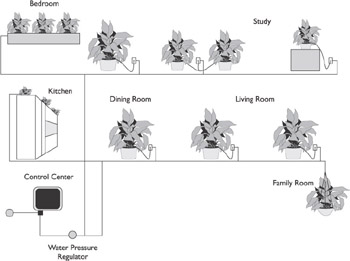
Figure 30-1: A stand-alone APM system installed into a home provides automated irrigation for houseplants.
Photo courtesy of Boca Automation, Inc.
An APM system uses low-pressure lines, high-integrity fittings, and adjustable emitters to supply water to a home’s plants on very short, but frequent watering cycles. These systems can be fully automated using stand-alone controllers or incorporated into home management systems for automated or remote control activation.
APM uses cross-linked polyethylene (PEX) tubing that is placed inside the walls or through joists during new construction or remodeling. The water pressure on the tubing is never high, which helps to alleviate the worry of a tube breaking inside a wall and the damage that would cause. The APM system uses frequent, short 10 to 20 second pulses of moisture to provide water to each plant.
APM controllers, to which the tubing is attached, use solenoid valves that open and close to send water to the various watering stations on the system. In use, an APM system operates very much like a home’s distributed audio or video system. The major difference, of course, is that water is being distributed and not electrical impulses.
Exterior Sprinkler SystemsAutomating the control of a landscape sprinkler or irrigation system has several benefits, not the least of which is conserving water. There are several automatic sprinkler controllers on the market that accept relay and PLC signaling to control their on/off and cycle functions. Several home management systems can be configured to use signals to control watering schedules, zone watering, run-on protection, and the integration of weather sensors that detect wind, freezing temperatures, or rain, like the integrated system shown in Figure 30-2, to cancel or temporarily suspend watering.
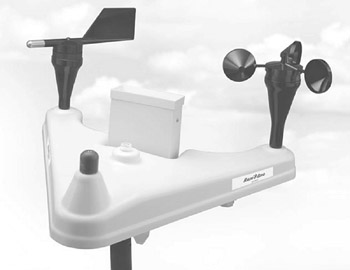
Figure 30-2: A weather-sensor can be used to detect rain, wind, freezing temperatures, and wind conditions to suspend a sprinkler system’s operation.
Photo courtesy of Rain Bird Corp.
Figure 30-3 shows an automated sprinkler controller that replaces a standard electronic sprinkler timer. The automated sprinkler controller receives scheduled PLC transmissions from a home management system relay and reacts to turn the sprinklers on and off, zone by zone or the whole system. Most of the automated sprinkler controllers include features that automatically turn off the system should the signal to do so not be received, such as in the event that the home management system fails. Some units will also work with a PLC remote control unit.
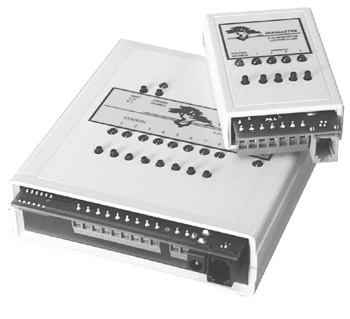
Figure 30-3: Two models of automated sprinkler control units
Photo courtesy of RCI Automation, LLC.
Water Management System Components
Depending on its scope, a water management system can include a variety of control valves, sensors, relays, solenoids, and other types of actuators, which carry out the actions dictated by the control system.
The most common components of a water management system are
- ActuatorAn actuator is a device used to open or close a valve. Actuators are commonly found on control valves that can be remotely controlled.
- Control valvesBasically, a control valve is either a manual or automatic valve that is used to control or enhance the flow of water (in this case) at a given point. Commonly, in residential settings, control valves are associated with water purification systems, hydronic boilers, or water heaters. In these systems, a control valve is used to increase water pressure or to stop or start the flow of water, or both.
- RelaysRelays are commonly used to start and control the pumps of the water system. Pump start and pump control relays are wired to water system control units to control the on/off functions of the water pumps.
- SolenoidsA solenoid is a device that uses an electrical current to create a magnetic field to either release a plunger or retract it. A solenoid valve, which is common to several forms of water management systems, opens and closes the valve gate when an electrical signal is applied to create the electromagnetic charge.
- Water pumpsIn water-based heating systems and in irrigation systems, water is moved through the system by pumps, which are typically sized to produce the gallons per minute flow required by the water system and its functions.
- HeatersBeyond the water heater used to heat water for general use, a water system may also include heaters to warm water at the tap (instant hot-water systems) or for other uses. Water heating units are typically electric or gas-fired, using a heating element immersed in a water holding tank that directly heats the water.
Water Management Design Considerations
The water systems that can be included in a water management system typically are the big three: water heaters; pools, spas, and hot tubs; and sprinkler/watering systems. The first two are management system candidates because they involve the heating of water that involves the use of electric or gas energy. Sprinkler and watering systems, if not managed, can pump out a large volume of water, often more than really needs to be applied.
Several stand-alone control systems are available to satisfy the desires of customers to reduce their water and energy bills. Control systems can provide not only time of day, day of week, and range of days on and off functions, but also flow volume and water temperature control.
General Design Considerations
Residential water systems can be installed as either stand-alone systems with their own discrete system controller or integrated into a home system controller. When a residential water system is integrated into a home automation controller, the interface is typically made through an available control unit relay or an add-on relay module.
The type of general water management system desired is perhaps the first issue that must be addressed in designing the system. The basic types of water management systems are
- ZonedJust like the lighting, HVAC, and audio video systems, the water management system can be divided into zones. A water management zone is one where the demand patterns and volume is very much the same and can be managed as a single entity. For example, if one area of the home has bathrooms attached or adjacent to bedrooms, the demand pattern for hot water is likely to be the same. However, if one of the bathrooms has a larger demand for water, hot or cold, it may be necessary to create a separate zone for that room and install separate supply systems for it. An obvious water management scheme would be to design separate water management zones for interior and exterior water systems.
- Remote accessA remote access water management system may actually encompass any other types of water management schemes. Regardless of whether a house’s water management system is zoned, scene-based, or timed, the customer may have a desire to access the control system remotely, either from within the home or from a remote location. The key issues are to identify the particular systems for which remote access is desired and determine the nature of the remote access and the type of control desired.
- Scene-basedTypically, water management system scenes, or subsystems, are specific water applications or treatments within a water management zone. One scene design may define the systems required to operate a fountain in a large foyer or on a patio; another scene may control the irrigation for houseplants throughout the house; another may direct hot water on demand to one particular bathroom during certain hours of the day; and yet another may control the filters, lights, and temperature of an in-ground pool. Defining water management zones may provide general system management, but a water management scene defines the specific actions required within a zone. Yes, in many cases, a zone and a scene may be coincident.
Obviously, the generic water management system types can overlap and commonly do. It is entirely possible for a timed or remote access system to be designed in either a zoned or scene-based arrangement. However, each of these system types should be considered to provide the best overall design possible.
The overriding assumption throughout all of the general water management system types is that a networked water management and control system is used to manage, control, and monitor the system.
Water Management System Programming Considerations
Four levels of water management system configurations can be applied when configuring or programming the system: seasonal presets, and time-of-day, zone, and conditional programming.
Seasonal PresetsCertain systems in a home are needed and not needed depending on the month, season, or weather. For example, in those locations where freezing temperatures are common during the winter months of the year, the management system can be programmed with a present month and day to turn off the landscaping sprinkler system until the month and day when the threat of freezing temperatures has passed. In this situation, the water management system could be preset to cease operating the yard sprinklers on November 15th and begin operating them again on March 15th.
Seasonal presets can also be used to manage the home’s systems, including the water management system, during periods when the homeowners are scheduled to be away from the home for extended periods. For example, if the homeowners know they will be away at their beach, mountain, or winter place during a particular season, the management system can be preset for this and shutdown or slowdown certain systems until a preset return date.
Time-of-Day ProgrammingTime-of-day control of the water management system is a very commonly applied control method. Whether the control is installed as a water flow timer on an outside water faucet to control the water flow to a single hose, an electronic sprinkler system timer (see Figure 30-4), or installed as a part of a whole-house management system, the principle is the same.
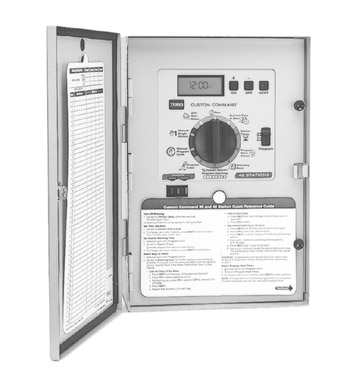
Figure 30-4: A stand-alone electronic landscaping sprinkler system timer provides time-of-day (and day-of-week) programming to control when yard sprinklers operate.
Photo courtesy of The Toro Co.
The demand for water, and especially hot water, varies throughout the day. In fact, there are times during the day, such as between midnight and early morning, when there is little in the way of hot water demand, but there is a demand for cold water to run the landscaping sprinkler system. A timed system can turn on or off certain parts of the water system to save energy and converse water.
Time-of-day programming is a basic feature of home automation controllers, including water management system controllers. This feature is also used to control when the hydronic HVAC system operates, when the water heater is on or off, and when the outside yard sprinklers run.
Zone ProgrammingThe control and management of water systems in a specific zone, such as when a water heater dedicated to one particular zone is on or off, allows the water management system in one particular area of a home to function independently of any other defined water management zones. One reason a zoned approach may need to be taken when designing a residential water system is that the water pressure to the home may not be sufficient to provide adequate pressure to all zones at the same time.
If zone programming is desired in a home’s water management system, the choice for an automated home controller or a water management system controller dictates that it provide multiple zone contacts and presets.
Conditional ProgrammingAnother type of programming that can be used to control when water systems operate in one or more locations of a home uses a variety of sensors and preset actions or conditions. One example of conditional programming is a leak detector that can detect a leak in a pipe, fitting, or storage tank, like the device shown in Figure 30-5, and shut off the flow of water to that area of the house or the entire water system, depending on its placement. Another example of conditional programming is shutting off the water heaters when a preset “Vacation” condition triggers.

Figure 30-5: A wireless water leak detector is able to detect a change in the water pressure and close its valve to stop water flow.
Photo courtesy of Dynaquip Controls.
A home control system can save the homeowner money, confusion, and frustration by replacing stand-alone systems for water systems, HVAC, and the like.
Many automated sprinkler control units include an interface for temperature, rain, snow, and other weather conditions in which the customer may not want the yard sprinklers to run temporarily. The water management system, using feedback from either the weather sensor or the sprinkler control unit, could then skip one or more days until the situation improves. This same principle can also be applied to the HVAC and other systems in the home.
Connecting to the Management System
In most water management systems, no special wiring is required, especially if control units are installed directly to the device being controlled. Those systems that require wiring can be connected to a home system control unit using low-voltage wiring, either as a part of the structured wiring or as stand-alone wiring. Many water management systems are “wireless,” meaning no new wiring is required to install them, and use PLC technology (like the units shown in Figure 30-6) that communicates over existing alternating current (AC) power lines.
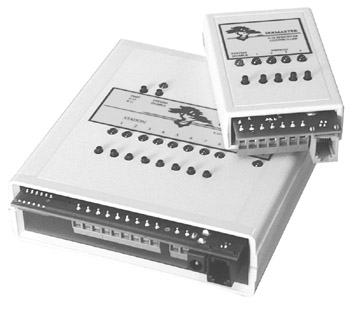
Figure 30-6: PLC water management control units
Photo courtesy of Home Controls, Inc.
For those systems that are not PLC-compatible or when this type of system isn’t desired, thermostat wire can be used to connect a system’s components and controls for low-voltage connectivity, and, if desired, Cat 5e wiring can be used for both communications and low-voltage signaling.
A water management system must be preplanned into a home so that its control wiring can be installed during the pre-wire phase of the project. If an automated home management system is to be installed and powerline technology is not to be used, then the appropriate low-voltage wiring must be installed and terminated as required for the system’s central or zone control devices.
Review
Residential water systems include the control and monitoring of water flow and the on/off functions of water heaters, sprinkler systems, irrigation systems, and pools, spas, and hot tubs. Water management systems are comprised of a variety of subsystems: water heaters, interior irrigation systems, and exterior sprinkler systems.
The most common type of water heater used in homes is a storage water heater. Other types of water heaters, although less often used in homes, are demand water heaters, heat pump water heaters, tankless water heaters, indirect water heaters, and solar water heaters.
Sprinkler and irrigation systems can be used both inside and outside a home. APM systems are used to irrigate residential plants and exterior plants. Automatic sprinkler controllers control the on/off and cycle functions of sprinkler and irrigation systems. A water management system commonly includes control valves, sensors, relays, solenoids, and actuators. Residential water systems are either stand-alone systems or integrated into a home system controller.
There are three basic types of water management system designs: zoned, remote access, or scene-based. These general water management system types assume a networked water management and control system is used to manage, control, and monitor the system. Water management system can be configured with seasonal presets, and time-of-day, zone, or conditional programming.
In most water management systems, no special wiring is required, especially if control units are installed directly to the device being controlled. Some systems use PLC technology that communicates over existing AC power lines. A water management system must be preplanned into a home so that its control wiring can be installed during the pre-wire phase of the project.
Questions
- Which of the following is not typically integrated into a water management system?
- Water heater
- Sprinkler system
- Heat pump
- Water faucets
- What type of water management system incorporates controls that turn water systems on and off based on the time of day?
- Timed
- Zoned
- Remote access
- Scene-based
- Typically, the HVAC system is a home’s largest energy consumer. What home system is the second largest energy consumer?
- Air conditioning
- Sprinkler system
- Water heater
- Lighting
- An APM system would be integrated into a home to provide what function?
- Control pools and spas
- Monitor a hydronic system
- Control landscaping sprinklers
- Irrigate houseplants
- What component can be used to open, close, or enhance the flow of water?
- Control valve
- Relay
- Solenoid
- Mixing pump
- Which of the following is not a common type of water management system subsystem?
- Water heaters
- Interior irrigation systems
- Exterior sprinkler systems
- Tap water systems
- “Wireless” water management controls most typically use what communications technology?
- RF
- PLC
- IR
- Ethernet networking
- Which two of the following are general types of water management system control configurations?
- Integrated
- Stand-alone
- Interior
- Exterior
- What are the primary reasons for installing a home control system in a home?
- Save money
- Replacing stand-alone systems
- Centralizing controls
- Establishing HVAC, lighting, and water management zones
- All of the above
- The most commonly used type of home water heater is
- Demand water heater
- Heat pump water heater
- Tankless water heater
- Storage tank heater
Answers
- D. The remaining choices are types of systems that are commonly integrated into a water management system. Outside water faucets can be, but are not commonly, incorporated under a water management system’s control.
- A. Remote access systems are those that can be controlled from outside the system, and scene-based systems are commonly used to control water devices within a zone.
- C. After the HVAC system, which includes the AC, the water heater consumes the most energy. The sprinkler system uses very little in the way of electrical or gas utilities (energy), and the lighting system may very well be third on the list.
- D. Automated precision micro-irrigation (APM) systems can be used to automatically water inside and outside houseplants. The other choices are systems that can be controlled under a water management system.
- A. Either acting on a signal from a thermostat, a control unit, or a home management system controller, a control valve starts or stops the flow of water, gas, or fuels. Relays are used to redirect control and communication signals; solenoids do open and close a flow, but cannot enhance the flow; and pumps are strictly flow enhancers.
- D. The other systems are commonly included in water management systems.
- B. Several types of PLC water management controllers are available.
- A and B. Water management systems can be either stand-alone, meaning self-contained and independent of a home control system, or integrated into a home control system.
- E. These are some of the primary benefits of installing a home control system, but this list is far from complete.
- D. The storage tank type of water heater is by far the most common type installed in homes.
Part I - Home Technology Installation Basics
- Wire and Cable Basics
- Connector Types and Uses
- Wiring Installation Practices
- Codes, Standards, and Safety Practices
Part II - Structured Wiring
- Infrastructure Wiring Basics
- Planning a Structured Wiring Installation
- Rough-In Installation
- Trim-Out Installation
- Troubleshooting Structured Wiring
Part III - Home Computer Networks
- Computer Network Basics
- Computer Network Hardware
- Computer Network Software
- Designing and Installing a Computer Network
- Troubleshooting a Home Network
Part IV - Audio/Video Systems
- Distributed Audio System Basics
- Designing and Installing Distributed Audio Systems
- Distributed Video Basics
- Designing and Installing Distributed Video Systems
- Troubleshooting Audio Systems
- Troubleshooting Video Systems
Part V. Home Lighting Management Systems
- Home Lighting Basics
- Home Lighting Devices
- Designing a Home Lighting Control System
- Installing a Home Lighting Control System
- Troubleshooting and Maintaining Lighting Control Systems
Part VI - Telecommunications
- Home Communication System Basics
- Designing and Installing a Home Telephone System
- Troubleshooting a Home Communication System
Part VII - HVAC and Water Management
Part VIII - Security System Basics
- Security System Basics
- Designing a Home Security System
- Installing a Home Security System
- Troubleshooting and Maintaining a Home Security System
- Home Security Surveillance Systems
- Home Access Control Systems
Part IX - Home Technology Integration
- Defining Users Needs and Desires
- User Interfaces
- Home Automation Controllers
- Programming
- Integrating the Connected Home
- Other Home Technology Integration Devices
Part X - Appendices
EAN: N/A
Pages: 300
